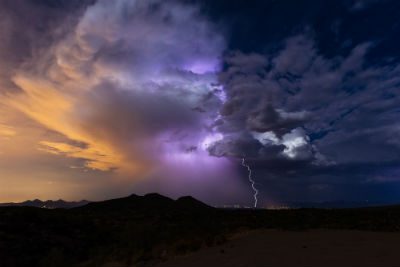Are you ready for the next severe thunderstorm? It’s important to be prepared and to protect yourself from lightning, wind, hail and other weather issues.
Lightning is the leading cause of injury and death from weather-related hazards, according to Ready.gov,a national public service campaign designed to educate and empower Americans to prepare for emergencies.
Most lightning strike victims survive; however, people struck by lightning often report a variety of long-term, debilitating symptoms. Thunderstorms are dangerous storms that include lightning, can include powerful winds over 50 mph, create hail and cause flash flooding and even tornadoes.

Laurie Gannon, director of claims administration for Virginia Farm Bureau Mutual Insurance Co., said the company frequently receives claims resulting from summer thunderstorms. “The damage we see depends on the type of storm it is.”
She said heavy lightning storms typically result in claims related to livestock deaths, damage to pumps and electronics, and food spoilage due to electricity outages.
“If there is more wind than lightning, we typically receive claims for trees or branches damaging structures, fences or driveways,” Gannon explained. “We also see blown-off roofing and siding materials and wind-driven rain damage.”
She recommended always unplugging appliances during storms and securing anything outdoors that could become a missile in the wind, such as trampolines, outdoor furniture and flags.
“Properly maintaining your home by trimming trees, caulking around windows and vents, and securing flashing around windows and dormers also is important,” Gannon added.
In most places, storms can occur year-round and at any hour. Many communities have a warning system for which residents can sign up. The national Emergency Alert System and National Oceanic and Atmospheric Administration Weather Radio also provide emergency alerts.
If a thunderstorm warning is issued for your area, seek safe shelter immediately. Move indoors when the thunder starts. A sturdy building is the safest place to be during a thunderstorm.
For more information on how to prepare for thunderstorms and lightning, visit ready.gov/thunderstorms-lightning.










